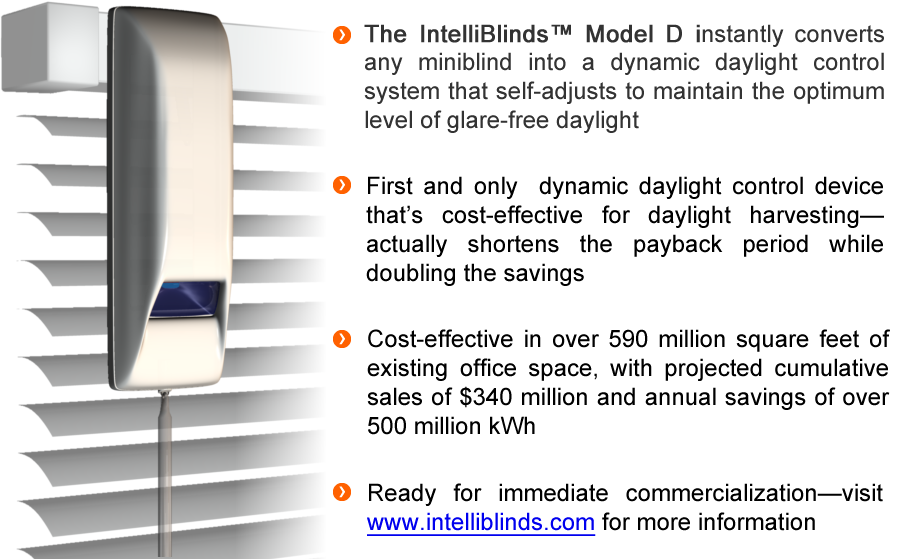
The Target Market: Energy-Saving Retrofits for Non-Residential Buildings
Buildings account for about 40% of total domestic energy consumption, much of which could be saved through relatively simple HVAC and lighting upgrades. In aggregate, U.S. non-residential buildings consume less energy than residential buildings, but their greater energy intensity and floor area per building make them a more lucrative target for energy-saving retrofits. In fact, the market for energy-saving retrofits to non-residential buildings exceeds $10B in the U.S. alone.
However, the market could and should be far larger. The problem is that investors in non-residential energy efficiency currently demand a far higher rate of return than is achievable with other types of investment. The median payback period for energy-saving retrofits is only about three years (corresponding to a stellar average annual rate of return of 33%), and investor interest drops to near-zero when the projected payback period exceeds six years (which correponds to a still-healthy ARR of 17%). Those ARRs are even more impressive in view of the fact that risks are far lower than for other types of investment.
So, what's limiting the market isn't a lack of capital to invest in energy efficiency. Rather, it's a lack of enough quick-payback energy saving technologies to fully exploit the available capital. Only a handful of technologies meet the market's stringent payback criteria—and all of them are are on-track to achieve deep market penetration.
However, there is a proven way to save substantial amounts of energy that remains mostly untapped: daylighting.
Daylighting: A Mostly Untapped Opportunity
One-third of the energy consumed in office buildings is for artificial lighting. But most of that energy is consumed during daytime, and office buildings are effectively just glass boxes. So what would happen if people turned off the lights and adjusted the window shading to take full advantage of natural illumination?
That's called daylighting—and if done in every office building in the USA, would save 3 billion kWh of electricity and $400 million each year, while keeping 2 million metric tons of CO2 from being released into the atmosphere.
Of course, people in office buildings are too busy to adjust lighting and window shading throughout the day. But inexpensive technology has long been available to do one of those two things automatically: daylight-harvesting lighting controls can dim or turn off the lights when there's enough daylight, and turn them on or brighten them when there isn't.
But the other half of the equation—automatically adjusting the shading—is a different story. Computer-controlled blinds and shades that automatically maintain the right level of daylight have been available for years, but they're far more expensive than daylight-harvesting lighting controls. So, while they can double the average savings from daylight harvesting, they also lengthen the payback period, making it even less appealing to investors.
So what happens if the blinds or shades aren't automatically adjusted? They're usually left closed to block occasional glare. In fact, numerous studies confirm that office-building windows are over-shaded most of the time, reducing the average level of useful daylight by half. That, in turn, reduces the average energy savings from daylighting by half.
And that's the catch with daylight harvesting: without automated shading, paybacks are too long due to insufficient daylight—but with conventional automated shading, paybacks are even longer due to excessive cost. As a result, despite being available for over a decade, daylight-harvesting lighting controls are still used in only a few percent of windowed commercial floor area.
Daylighting's enormous potential has remained mostly untapped because there hasn't been a cost-effective way of taking full advantage of the available daylight…until now.
Finally...Cost-Effective Automated Shading for High-Performance Daylighting
The IntelliBlinds™ Model D intelligent miniblind actuator is a small device that can be quickly retrofitted to any miniblind, instantly converting it into a state-of-the-art dynamic daylight control system. The Model D automatically adjusts its host blind to maintain the optimum level of glare-free daylight, more than doubling the average energy savings achievable with daylight harvesting.
But more importantly, thanks to patented and patent-pending IntelliShading™ technology, the IntelliBlinds™ Model D is the first and only automated shading product that's affordable enough to actually shorten the payback period for daylight harvesting. In fact, it shortens the payback period enough to triple the projected market penetration of daylight-harvesting lighting controls:

By doubling the per-site savings and tripling the market penetration, the IntelliBlinds™ Model D will dramatically increase the aggregate domestic energy savings from daylight harvesting in U.S. office buildings—while simultaneously enhancing the comfort, morale, and productivity of the people who work in them.
Ready for Commercialization
After years of development, the IntelliBlinds™ Model D is ready for commercialization. And, while energy efficiency has always made sense, the market is now especially hungry for cost-effective energy saving technologies.
As a result, getting the Model D into production so that it can begin saving energy is our first commercialization priority.
To learn more about the Model D and how it will revolutionize non-residential daylighting, contact us directly or visit our external site intelliblinds.com.

